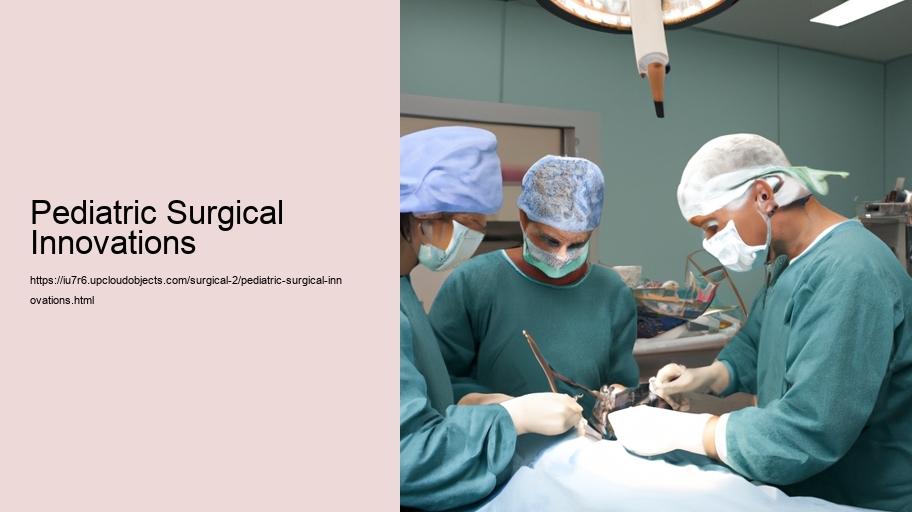Pediatric Surgical Innovations: An Essay on Advancing Child Health Care
The landscape of pediatric surgery has been transformed dramatically by the advent of innovative technologies and techniques. The term "Pediatric Surgical Innovations" refers to the cutting-edge advancements and novel approaches designed to improve surgical outcomes for the youngest patients. This essay delves into the implications of these innovations, highlighting how they have revolutionized the field and contributed to the betterment of child health care.
Pediatric surgery is inherently complex due to the unique physiological and developmental characteristics of children. Smaller anatomical structures, rapid growth rates, and distinct medical needs present challenges that require specialized solutions. Innovations in this field have been driven by the desire to minimize trauma, enhance precision, and facilitate quicker recoveries.
One of the pivotal innovations in pediatric surgery is minimally invasive surgery (MIS). Techniques such as laparoscopy and thoracoscopy allow surgeons to perform complex procedures through small incisions. This approach has numerous benefits, including reduced pain, lower risk of infection, faster healing, and less scarring. For children, who are often more fearful and anxious about surgery, the cosmetic and psychological advantages of MIS are particularly significant.
Robot-assisted surgery represents another leap forward. Robotic systems provide surgeons with enhanced dexterity, precision, and control, allowing for intricate procedures that would be challenging or impossible with conventional methods. The magnified, three-dimensional view offered by robotic systems gives an unprecedented level of detail, enabling surgeons to work with a high degree of accuracy on the small, delicate structures within a child's body.
Another area of innovation is the application of regenerative medicine and tissue engineering in pediatric surgery. Researchers are exploring ways to use a child's own cells to grow organs or tissues in the laboratory, which can then be transplanted without the risk of rejection. This could circumvent the shortage of pediatric donor organs and provide a tailor-made solution for congenital defects.
The use of 3D printing technology in pediatric surgery is also noteworthy. Surgeons can use 3D-printed models for preoperative planning, practicing complex procedures, and educating families about the surgery. Customized implants and prosthetics can be created to fit a child's unique anatomy, improving the fit and function while accommodating growth.
Surgical simulation and virtual reality (VR) are transforming surgical training and preparation. Simulators allow novice surgeons to practice skills and procedures in a risk-free environment, building their expertise before operating on actual patients. VR can also be employed to help children understand and prepare for their upcoming surgeries, reducing their anxiety and improving the overall experience.
In addition to these technological advancements, there is ongoing research into improving anesthesia and pain management for pediatric patients. New protocols and drugs are being developed to provide effective pain relief with minimal side effects, ensuring that children can recover more comfortably and with less distress.
Despite these remarkable innovations, there are challenges that must be addressed. Access to these technologies is not uniform across the globe, with disparities in healthcare systems leading to unequal opportunities for children in different regions. There is also the question of cost, as advanced surgical techniques can be expensive. Ensuring that these innovations lead to equitable improvements in pediatric care requires concerted efforts from healthcare providers, policymakers, and the medical technology industry.
In conclusion, pediatric surgical innovations have ushered in a new era of possibilities in child healthcare. Minimally invasive techniques, robotic surgery, regenerative medicine, 3D printing, surgical simulation, and enhanced pain management are all contributing to safer, more effective treatments for young patients. As we continue to embrace and develop these technologies, it is imperative that we also strive to make them accessible and affordable, so that children everywhere can benefit from the remarkable strides being made in pediatric surgery.
